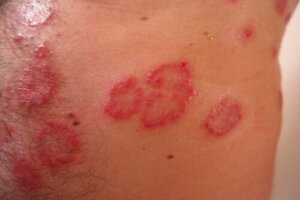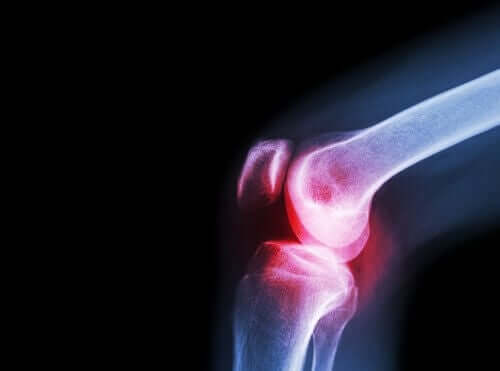World Lupus Day: The Butterfly Rash Disease


Written and verified by the doctor Leonardo Biolatto
Through an initiative of the World Lupus Federation, since May 10, 2004, people have organized international activities for World Lupus Day. This organization has a strong presence and is a benchmark in this area.
The goal of World Lupus Day is to reach out to governments and financially-funded groups to raise support for research on the disease. Remember that even today, this disease is studied and treated, but doesn’t have a cure.
The most common form is systemic lupus erythematosus, and it’s much more common among women than men. Researchers estimate that 90% of the patients are female. And, among them, African-Americans are a majority group.
Doctors don’t completely understand the causes of lupus, although they know it’s an autoimmune disease. However, they have identified triggers for the symptoms, such as sunlight, some infections, and drugs.
The classic symptom of a butterfly-shaped rash on the face is related to sun exposure. Patients must be very careful with radiation and use sunscreen almost constantly.
Symptoms of lupus and butterfly wings
World Lupus Day reminds the general population of the characteristic signs and symptoms of this disease. Identifying it early doesn’t lead to a cure, but it does improve management to decrease acute attacks of the disease.
The symptom of the butterfly wings is called, in technical terms, a malar rash. Just like with skin irritation, the skin of the nose and cheeks turn red, forming a rash that looks like a butterfly.
Although it doesn’t always appear in the same place, the butterfly rash turned out to be the symptom that made the deepest impression on the collective unconscious about the disease. The truth is that the rash can appear on the limbs and torso, too.
The other common symptom of systemic lupus erythematosus is joint pain. This comes from arthritis that’s triggered by the autoimmune reaction unleashed within the body. The evolution of this arthritis happens in acute attacks, with periods without pain and others of high pain.
Finally, almost 90% of patients report extreme fatigue. This symptom is difficult to measure objectively, and doctors use quality of life questionnaires for it. Indeed, there are many factors that determine exhaustion, including joint pain and a certain insomnia associated with lupus.

Keep reading: 5 Things You Should Know About Autoimmune Diseases
Other types of lupus
World Lupus Day brings up the less common symptoms of the disease. As we already mentioned, systemic lupus erythematosus is the most common, but not the only one. In fact, the disease can disguise itself in other ways that make diagnosis difficult.
The following are other types of lupus:
- Neonatal: This happens when the mother has lupus and transmits the antibodies that she has to her child and they attack its own tissues. It can be a serious condition if it progresses to heart problems.
- Dermal: This form has the main symptoms on the skin. In general, patients don’t have arthritis or complications in other organs. It’s a localized variety of lupus, and highly dependent on exposure to solar radiation.
- Drug-induced or reactive: this happens with drugs, and some consider it an adverse effect, more than a disease in itself.
Find out more: Lupus and Pregnancy – What You Should Know
Lupus Treatments
Lupus can be mild or severe. This will define the treatment approach. World Lupus Day aims to promote research in this regard to improve treatment of patients, however, so far we can only talk about controlling the disease, since there’s no cure.
When lupus is mild, doctors recommend oral anti-inflammatories and creams for skin rashes, including the butterfly wing malar reaction. There are patients who have seen improvement with hydroxychloroquine, which is the medicine for malaria, and some new drugs, such as belimumab.
Serious symptoms also need anti-inflammatories, but the doses are much higher. Along with corticosteroids, doctors prescribe azathioprine and cyclophosphamide, which are immunoregulators.
World Lupus Day: the challenge of living with the disease
Lupus is a condition that affects patients’ quality of life. Indeed, pain, skin reactions and extreme tiredness prevent people from enjoying their daily activities.
If progress is made in the disease, there may be drugs that can control and even cure the disorder. For now, it’s essential for health teams to support those affected by giving them tools to live better.
All cited sources were thoroughly reviewed by our team to ensure their quality, reliability, currency, and validity. The bibliography of this article was considered reliable and of academic or scientific accuracy.
- Colmán, Isabel Acosta, et al. “Manifestaciones clínicas y laboratoriales en el Lupus Eritematoso Sistémico-LES.” Memorias del Instituto de Investigaciones en Ciencias de la Salud 14.1 (2016).
- Gómez-Puerta, José A., and Ricard Cervera. “Lupus eritematoso sistémico.” Medicina & laboratorio 14.05-06 (2008): 211-223.
- Sánchez-Rodríguez, Sergio H., et al. “Lupus eritematoso: enfermedad autoinmune sistémica y órgano específica.” Revista Biomédica 15.3 (2004): 173-180.
- Ondarza Vidaurreta, Raul N. “Lupus eritematoso sistémico (LES).” Revista de Educación Bioquímica 36.1 (2017): 21-27.
This text is provided for informational purposes only and does not replace consultation with a professional. If in doubt, consult your specialist.








